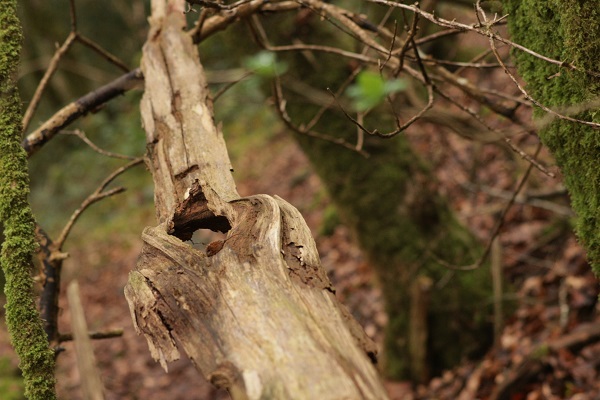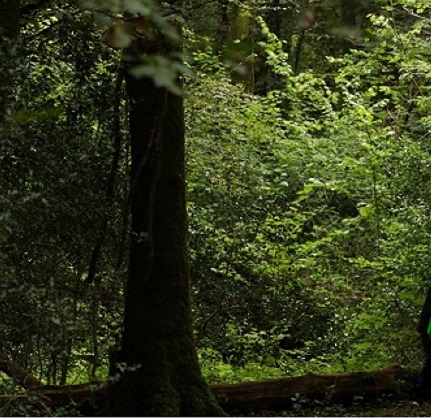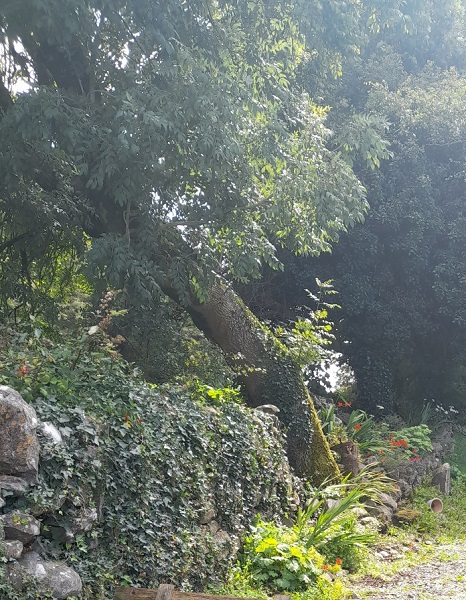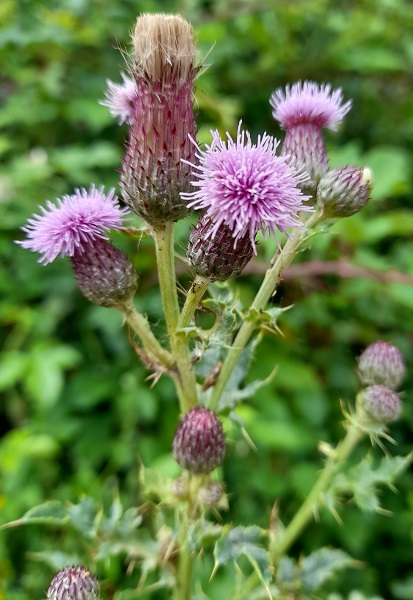Killomoran, co Galway
Old Irish Tales
The Schools’ Collection, Volume 0047, Page 0296
When Cumhal and the Fianna were hurling in Cahermore turlough in the Parish of Kinvara Co Galway, his wife had the little boy on the side lines watching the game. During the game the little fellow getting interested in the game rushed in and hit the ball, the shot was so accurate that Cumhal said “Cé hé an páisdín Fionn”? His mother rushed in for him and said “You have now got your name so he was called Finn.”
Diarmuid and Grainne’s Bed is in Crannagh, Gort, Galway. Whey they were fleeing from Finn they are said to have put up these huge stones.
St Patrick – 1917
The Catholic Press, 7th June, 1917 p46
The Feast of St. Patrick, the Apostle Saint of Ireland, is kept on March 17. Some people contend he was born in Scotland, others in France; but most historians favour the former country. When he was 16 years old he was carried into Ireland as a captive, where he was sold as a slave to a chieftain named Michu; this was about the year 400. For six years he was a shepherd on the Slemish mountain in Antrim. All those years he had a zeal for God’s glory, and God must have been inspiring his soul for his future and apostolic work.
Soon, however, he escaped, and went to Rome, and here he became a priest. After a few years he went back to Ireland, not as a slave this time, but as the conqueror of Ireland — not the conqueror by fire and sword, but by the word of God.
He landed in the south, but he was driven off. He sailed northward, and again landed at Magh Innis, in County Down. Michu, hearing that Patrick had landed with several men, thought that Patrick had come to capture him and take him back to Rome, as his slave. Michu therefore threw himself into a fire. St. Patrick knew that the Parliament of Ireland would be meeting at about this time in Tara, the residence of the ancient kings of Ireland. St. Patrick went, and that day he converted several hundred people. But the main one was the king, and he died as ignorant as ever of the religion of Our Divine Lord.
St. Patrick ordained over 300 Bishops, and it is said he visited them constantly until his death. He comforted the sorrowful, and he strengthened them in their faith. St. Patrick passed to his reward on March 17, 493, and the last Sacraments were administered by St. Tassach. A portion of his remains was taken to Rome and deposited in St. Mark’s Basilica.
Leo Poidevin. (Aged 12 years 1 month.) Victoria-street, Bowral.
The Gaeltacht Problem – 1928
Advocate (Melbourne: Vic) 22nd March 1928 p.13
When the Dail assembles it is recognised that the Gaeltacht report will come before it in the form of a bill. How much of the report will be visible in the bill is, of course, not possible to say. No doubt most of us will be disappointed. It is known, however, that the future of Galway University College will depend on the view the Dail takes of the possibility of a scheme of higher education the Irish language. The college authorities, it is understood, have received a hint that they might interest themselves in the better adaptation of the institution to the needs of students who in the next twenty or thirty years will be desirous of making their knowledge of Irish as complete as facilities permit,
The Majority of the Commission made important recommendations in connection with the college, pointing out that it could be made a centre for Gaelicisation of the country. The Department of Education is in agreement with this view and the Treasury is not unwilling to pay up if a feasible scheme is set before it. Already it is known that Galway has been appointing lecturers in history and economics, who are fluent speakers of the language and who are willing and able to lecture their students in it.
The hinterland of the Galway College is, of course Gaelic in a way that the hinterland of no other college is; for all that, the college in Cork has shown more initiative in Gaelic studies. It has now turned its attention to the formation of a collection of Gaelic manuscripts, and is, we understand, succeeding as well as could be expected in the case of a college whose funds are not at all adequate to its ordinary needs.
Galway
The Macleay Chronicle 25th July, 1917 p.6 (Kempsey NSW)
Galway.
Talk of making Galway, with its magnificent harbour in which the whole British navy could ride at anchor, a port for direct trade with America is again to the fore; but probably nothing will come of it.
Little over four hundred years ago, the seaport of Galway, on the west
coast of Ireland, was one of the great trade centres of Western Europe. It did special business with Spain. Galway merchants went to Spain, and Spanish merchants came to Galway, to talk trade, exchange views, and plan new enterprises. Galway men of affairs were wealthy and prosperous, and it came to be a saying, in those days “as proud as a Galway merchant.” So well off, indeed, was the city, and so many its extravagances, that, towards the end of the Sixteenth Century, an inquiry was held by direction of the Lord Deputy, Sir John Perrot, with the result that rigid sumptuary laws were passed. No young man, “prentice or other wise, ” was to wear ‘ gorgeous apparell ne silks, either within or without their garments, non yet fyne knitt stockings either of silk or other costlie wise. ‘ And there was much else to the same purpose.
Galway, in fact, had always been a specially favored town. There is little known as to its history, it is true, before the coming of the English, but, once William Fitzandelm de Burgo, the Norman, under a grant from Henry II, had finally dispossessed Rory O’Connor, and converted the town into his own principal stronghold, it grew rapidly in importance. After the building of the walls and fortifications, about the year 1270, its trade, indeed, increased by leaps and bounds.
It was at about this time too, that there came to the city those famous settlers from England, known, in subsequent history, as the ‘tribes of Galway,’ the Blakes, the Bodkins;, the Joyces, the Lynches, the Martins, and so on. There were fourteen of them altogether. This strong growth of an urban community, as one writer justly points out, self-controlled and distinct was typical of the time. While the country was torn with perpetual strife between English, Irish, and Anglo Irish rulers, the towns of Waterford, Limerick, and Galway virtually developed into self-governing republics. “They elected their own magistrates, excluded the King’s judges, contributed nothing to the King’s revenue, declared war and concluded peace, without the smallest regard for the Deputy and the Dublin Parliament. ” Thus, in 1524, Limerick and Galway went to war with each other, and the hostilities were ultimately concluded in the most formal manner by a formal treaty. It was the civil war in England which finally put an end to this prosperity and independence. It dealt hardly with Galway. The city stood for the King, but ultimately was obliged to surrender to the
Parliamentary forces under Sir Charles Coote. The surrender, it is true, was made on honorable terms, but the treaty was shamelessly broken. The town was plundered, and the ancient inhabitants were, for the most part, driven out, many hundreds of them being sold as slaves to the West Indies.
New uses for Peat – 1935
Advocate (Melbourne) Thursday 9th May, 1935 p.11
Determined to make its peat scheme a success, the present Government is sending a mission to the Continent to study the work done there through the medium of peat. Already much has been accomplished in substituting this native fuel for imported coal. In thousands of city homes peat is now burned almost exclusively. Travellers from the country claim that as they come near Dublin the fragrance of turf meets them as it rises up from the capital. The scheme now in operation provides a guaranteed price for the turf cutter and a fixed price for the consumer, the Government taking responsibility for the quality.
The projected tour abroad is for other employments for peat. The delegation, headed by Dr. Henry Kennedy, secretary of the Irish Agricultural Organisation Society (the co-operative society founded by Sir Horace Plunkett), includes also a representative of the Electricity Supply Board, which controls and directs the Shannon Scheme. In Russia, which the delegation are to visit, some of the greatest power stations burn only peat.
Dear Gumblossom – 1934
Catholic Freeman’s Journal, Sydney, 24th May, 1934 p.38
Headford, Co. Galway
Dear Gumblossom,
Thanks very much for sending on my letter to Mary Downes. I did not know her whole address. She sent me a lovely long letter full of news. Thanks, dear Gumblossom, for your kind invitation. If any of the Pageites write to me I will answer them during the holidays, as I am only allowed to write one letter home every week during the school term. I am at school in the Dominican College, Galway and I like it well. We have a fairly good time. Our games are tennis, camogie and basketball, and there are swings for the small children. We are let out to matinees at the pictures and Irish plays. We have drill and dancing too. We get a month’s holiday at Christmas, a fortnight at Easter and from the middle of June to the beginning of September in summer.
Now I must tell you about Headford. Do you like the pictures enclosed? One is of the part of the street in which our house is, and the other of Ross Abbey. Ross is about a mile from Headford and is a noted ruin. It is used as a burial ground since the seventeenth century. Before that it was a Franciscan Monastery till Cromwell sacked it. Headford is a small town. It has a population of about 500. It is about seventeen miles from Galway city and Lough Corrib is three miles away. Last summer we did a lot of bathing and boating on the Lough. I even did a little fishing, but I have no patience. I enjoy reading the letters in your Page, the Arrows write such funny ones.
Here is a storyette before I finish. When the English King was sick and had to have a transfusion of blood an Irish man offered himself. After the operation the Royal Physician asked,
“How do you feel, your Majesty?”
“Majesty be hanged,” was the reply.
“Up with the Republic.”
Wishing yourself and all the Pageites every success.
Yours sincerely,
Ruby Canavan
Casting the Reel – 1869
The Newcastle Chronicle (NSW) Tue 21st December, 1869 p2.(abridged)
There was a party gathered one Hallowe’en. They sat round the fire burning nuts and telling stories just as we do tonight. One among them was a lady newly betrothed, the gayest, the proudest, the must beautiful of them all. Her lover sat by her side. Her wild and wilful ways had often given him a heartache, but he loved her dearly.
Someone among the party dared her to go and cast the reel – through a high staircase window that looked down on a dark plantation.
The one who tries this charm must stand at a window alone while the clocks toll for midnight, and, throwing the reel, must wind the thread upon her hand, and call three times; and at the third time, if her heart fail not, they say, her future bridegroom will answer from below.
The lady I tell you of, sprung up and said she would go, for she feared nothing in this world or the next, and though her lover prayed her to remain, she still persisted.
‘You shall see,’she said, ‘whether you have a rival!’
She took a light in her hand, and went alone up the staircase. When she reached the casement she stood still and waited, minute after minute, ’til the clock sounded the first stroke of twelve. Then she flung the reel far down into the darkness, and began to wind the thread.
‘Who is there?’ she cried.
All was still, for the very wind seemed to pause and listen to her call.
Again she called;
‘Who’s there?’
This time there came a soft and smothered sound from below, as though one fetched a heavy sigh. The lady’s hand grew cold, and her breath came short; but she had a dauntless spirit, and said to herself,
‘Tis but the night wind in the trees.’
She waited. Just as the last stroke of the hour sounded, she called aloud for the third time,
‘Who is there?’
And in the stillness an awful voice came up fiom the darkness, saying;
‘I am here.’
The lady shrieked and fled downstairs. When she entered the room again, where her companions were sitting in the pleasant fire-light, she was pale and cold as a corpse. When her lover ran to meet her, she held him off and stared at him as if she scarcely knew him.
After that night she was changed. A secret fire within her seemed burning her away. Her old wild temper was gone. Her proud spirit drooped day by day, and the next Hallowe’en she lay a dying.
All through the night she lay as if asleep, but when the clock began to toll for midnight she looked up. Like one startled and afraid, she panted, in a failing voice, ‘Who is there?
Only she heard the reply.
With a shriek she fell back dead.
Her future groom had indeed called.
His name was Death.
November Night – 1872
Warwick Examiner Sat 24th Feb 1872 p4 (abridged)
Allhallow’s Eve, the night before All Saints’ Day, being the last joyous feast of the ecclesiastical year, before Advent, was anciently kept with cheerful sociability in many rural households, by rich and the poor. It was an occasion that seemed to mark the close of the harvest season, and the beginning of winter, the time of home delights, when the comforts of a well to-do life are enjoyed. There was, moreover, a superstitious notion that on this particular sight of the year (as on the Walpurgisnacht in Germany; which is made such a strange, wild time in Goethe’s ‘Faust’) all the fiends, imps, goblins, witches, and other un-blessed agents of supernatural power would come out and frisk about the world till daylight or cockcrow. Hence it was supposed to be a most favorable occasion for divining people’s fortunes by different methods of conjuration or chance experiment.
In the south of Ireland it is usual for country people to hold their sportive meetings not on the night before November 1, or All Saints’ Day, but on the eve of November 2, which is All Souls’ Day, the day appointed by the Roman Catholic Church for a solemn service for the repose of the dead. The fairies of Celtic fancy are more frolicsome than wicked, and there is something graceful and amiable in the Irish popular superstitions, compared with the ghastly horrors of Teutonic and Scandinavian
tradition.
There is dipping for sixpences, to be caught up with the teeth at the bottom of a tub of water. There is bobbing for apples, fastened alternately with lighted candles around a hoop, suspended and kept twirling at the level of the lips, so that one risks being burnt in the attempt to snatch a
morsel. There is, of course, the prescribed ordeal of burning pairs of chestnuts to represent pairs of lovers, and to show which of the two is destined to bounce off, or whether they shall remain constant to each other in one steady flame of affection. But the Irish festive fortune-tempters have another method peculiar to themselves.
Three or four saucers are placed on the table, in one of which is laid a ring, which denotes marriage; in the second a lump of clay, signifying death; and into the third is poured water, the meaning of which is the sea-that is emigration across the Atlantic. There may be a fourth saucer, containing salt, which means the the person is to be preserved, during the year, from all those fates. A man or woman is blind folded, and the saucers are then changed or shifted, after which he or she is bidden to lay hands upon one of them. The one so accidentally touched is a sure token of what will befall him or her within the next twelvemonth.
Killannin – 1895
Gympie Times and Mary River Mining Gazette (QLD) 29th Oct. 1896 p. 4
A Singular Revolt in Galway
(Times, September 13.)
A singular revolt against ecclesiastical authority in the Roman Catholic parish of of Killannin, in the county Galway— a revolt which has been in existence for the last three years — has now assumed a formidable aspect. Some three or four years ago Dr. MacEvilly Archbishop of Tuam transferred the parish from the diocese of Tuam to that of Galway. The
parishioners indignantly protested against the change, and the parish priest, the Rev. Father Coyne, strenuously opposed it by every possible means, and finally went to Rome to present an appeal to the Pope on the subject, his parishioners undertaking to defray the expenses of his journey. He complains that by the influence of ecclesiastics surrounding his
Holiness, his appeal was intercepted and never brought before the proper tribunal, and that a decree had been obtained against him by misrepresentation and suppression of the facts. After waiting in Rome for over 12 months in the hope of having his case heard, he returned to
Galway and was the object of a great popular demonstration. In the meantime, Dr. MacCormack, Bishop of Galway, took over the parish and appointed another priest, the Rev. Father Conry, to administer it.
The parishioners built up the chapel doors with masonry and secured the windows, and before mass could be celebrated in it the building had to be broken open amidst a scene of great excitement, by a party armed with crowbars and pickaxes, protected by the police with fixed bayonets and loaded rifles.
Some of the parishioners repudiated the right of Bishop MacCormack’s nominee, and an angry controversy, in which violent language was used on both sides, has raged ever since. The novel spectacle of two rival priests in the same parish is now presented. The parishioners are about equally divided, and one portion of them attends the ministrations of the Rev. Father Coyne, who celebrates mass in his house and performs the rites of marriage and baptism, while the other party attends the chapel.
In order to vindicate his authority and put an end to the opposition, Father Conry announced a public meeting on Sunday week, which was a failure. Another was organized for Sunday last, and the country was covered
with placards calling on the people to assemble in their thousands to denounce ‘the Killannin Jumpers, Heretics, and Schismatics.’
A large crowd, headed by the Rev. Father Conry, assembled, and it was proposed to hold the meeting opposite the Rev. Father Coyne’s house, but that Rev. gentleman, surrounded by about 400 people, looked so menacing that it was thought expedient to hold it in front of Father Conry’s house. Father Conry presided, and motions were proposed calling upon the faithful to have no dealings with ‘these pompous heretics and schismatics,’ and recommending that neither the young men nor the women of the faith should marry or speak to them. Father Coyne’s supporters having come up when this resolution was passed are reported to have received it with roars of laughter, and the proceedings ended amid the shouts and yells of the rival parties.
Clifden – 1907
The W. A. Record (Perth) 7th Sept, 1907 p4.
Mr Marconi is engaged in perfecting the arrangements for receiving wireless telegraphic messages from Canada at the new station provided at Clifden, County Galway. The distinguished electrician believes that the station at Clifden is much more powerful and better than the one at Poldhu in Cornwall.










